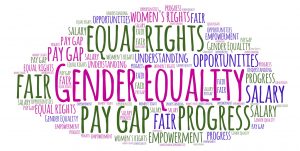In times of crisis, women’s employment is more precarious than men’s. This was true during the Corona epidemic, and this is what is happening today — due mainly to the gender division of labour in the household, reinforced by upsets or closures in the education system, especially during wartime when numerous men are called up to the reserves
In times of crisis, women’s employment is more precarious than men’s. This was true during the Corona epidemic, during which women were more likely than men to be put on leave without pay or laid off, and this is what is happening today — due mainly to the gender division of labour in the household, reinforced by upsets or closures in the education system, especially during wartime when numerous men are called up to the reserves.
Recently the Government Employment Service published figures on persons released on leave without pay or unemployed during the month of October.
According to that publication, in October, there were 42,400 new employment seekers, due to their having been sent on leave without pay, 59% of them women; it appears that women will feel the brunt of changes in the labour market resulting from the war more than men. An examination of the occupations in which large numbers of persons were released on leave without pay makes this phenomenon clear. Those are occupations in which women constitute the majority: salespersons and service providers (53% women), caregivers and assistants in the area of healthcare (87%), and managers in the area of administrative services (51% women).[i]
Among the occupations which the publication stated had the highest likelihood of being released on leave without pay in the near future were employees in the area of personal services, among them distinctly female occupations: cosmeticians, hairdressers and beauty salon workers, as well as salespersons and customer service people — most of these female occupations.[ii]
Being sent on leave without pay costs the employee. Employment compensation for young people up to age 28, who constitute a large group of persons on leave without pay, is between 70% and 80% of salary for low earners, about 60 % of salary for persons with average pay, and about 40% for persons with high salaries.[iii]
Women constitute the majority among persons paid by the hour, especially in caregiving occupations, and as such they are more likely to have their hours and pay cut, and if sent on leave without pay their social rights are also diminished: pension savings, sick leave, vacation pay.
Not only that: severance pay packages do not apply to parents of children up to the age of 14 and children with special needs that were absent from work due to the closure or partial operation of schools: this in accordance with the instructions of the Home Front Command. In some localities, like Netivoth, Beer Sheba, Ofakim and Ashkelon, no frontal teaching has taken place since the beginning of hostilities. As women are the main caregivers of children and earn, on average, less than men, it is reasonable to assume that women are more likely to remain at home with the children than men.
The problem is especially acute in the private sector, in economic branches whose income has been adversely affected by the war situation. In such cases, the employer is unable to afford salary expenses, and the burden falls on parents who use their paid vacation days to stay home with the children or, if they have already used them up, absent themselves from work without pay. In such a situation, they become more vulnerable to a reduction in their working hours or to layoffs.
References:
[i] Central Bureau of Statistics. Manpower Survey 2020. Table 2.18. Figures are for 2019.
ii] Ibid.
[iii] National Insurance Institute. Table of Unemployment Compensation.






